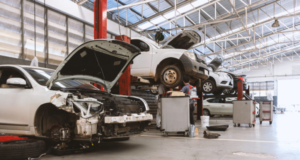Alta Climbing is a sport that cultivates the connection between body and rock. It is also a form of art that balances strength and technique.

A jug is a large hand hold that is easy to grasp onto. A crimp is smaller and cannot be gripped with the fingers, so climbers use their palm to create surface friction.
Climbing is a dangerous sport that requires a lot of strength and technique. It’s also an inherently social activity, with most climbers having to work together to create a system of mutual safety and trust. This is why groups of climbers with extremely disparate skill levels can easily and enjoyably climb together. Climbers are bonded by their shared love of the sport and its lessons in problem solving, courage, and mental strength. Climbing is a sport that can be enjoyed from childhood through old age and provides a unique and fulfilling life experience.
Unlike other sports that are dominated by brute force, climbing is split almost evenly between strength and technique. This is why a weaker competitor can often out-perform a stronger competitor, even if they have worse technique. A strong climber, on the other hand, can be a liability to their team if they have a lack of psychological self-belief.
Many climbers prefer trad climbing, or traditional climbing, where they use natural features and protection on the route rather than artificial anchors. Other climbers prefer sport routes, which are bolted and designed for speed. There are also many forms of bouldering, which involves a series of short moves. The sport of climbing has a large following in the United States, and is growing worldwide.
It’s a relatively inexpensive sport to participate in, with a pair of shoes and a chalkbag costing less than $50. It’s also a great way to stay in shape. Climbers typically spend their time at local crags, or rock gyms. Most people who are passionate about climbing have a story about how the sport snuck into their lives and took over.
It’s a hobby
Climbing is a highly-skilled sport that requires a great deal of practice and dedication. Although the sport is not as extreme as many other extreme sports, it still presents a lot of risks and can be dangerous for inexperienced climbers. It also requires a high level of physical fitness and agility to perform the complex movements. The physical activity also helps alleviate symptoms of depression and anxiety. In addition, climbing promotes mindfulness, which is a form of mental exercise that can improve mood and reduce stress.
Climbers need a high degree of flexibility to make the most of their body’s potential. Some footholds are located on the level with a climber’s shoulder, while others require contortion of the spine to reach. This flexibility is important for improving strength and preventing injury. The sport also requires a large amount of endurance, as climbers must be prepared to spend long periods of time suspended in the air. This endurance is especially necessary for outdoor climbing.
Unlike other types of physical sport, climbing is a comparatively social activity. It requires two people to work together – a climber and a belayer – which creates an opportunity for socializing and meeting new friends. The social aspect of climbing is an integral part of the sport’s appeal, and many people enjoy it more when they are in the company of friends.
Although many people have a stereotype of a “climbing guy” (somebody who takes his top off unnecessarily), most climbing enthusiasts are not in it for the money or the fame. They do it for the satisfaction of pushing themselves to their limit physically and mentally. The gratification they get from the achievement of their goals acts as a major motivating force, and it is hard to find another sport that offers such instant gratification.
One of the greatest benefits of climbing is that it teaches you to think purely in the moment. This is an invaluable skill that can help you to stay focused and centered in difficult situations. This is a particularly useful trait in modern life, where it can be challenging to remove yourself from the constant distractions and demands of everyday life. It also allows you to focus on your strengths and weaknesses, and learn from mistakes.
It’s a fitness activity
Climbing is a fitness activity that pushes you to your limits and gives you a sense of accomplishment. It can be done both indoors and outdoors on natural rock formations or artificial climbing walls. It can also be used to scale tall heights, such as cliff edges and mountains, using safety equipment. It’s important to practice climbing techniques to improve your balance and strength. This sport is not easy and can be dangerous, so it’s important to follow proper safety precautions and train under an experienced instructor.
There are many different types of rock climbing, and each has its own unique features. For example, some climbers prefer to free solo and don’t use ropes at all (free climbing). Others enjoy the challenge of a long route and may even spend days and nights sleeping on a portaledge hanging from the rock face. These climbers are known as trad climbers.
Some rock climbers choose to compete on standardized artificial routes, called “bouldering routes.” These are essentially pre-fabricated routes with the same holds, and they’re usually located in bouldering gyms or competition venues. Other forms of competitive climbing include speed climbing and lead climbing.
In addition to the physical benefits of climbing, it can help you develop mental strength and discipline. It can also improve your ability to problem solve. When you’re climbing, you need to be able to assess your surroundings and make decisions quickly. This is especially important if you’re on a difficult route.
There are several types of climbing equipment, but the most important is the rope. A daisy chain is a length of webbing with sewn loops that run the entire length of the “chain.” One end is girth-hitched through a tie-in point on the climber’s harness and the other is clipped to an anchor with a carabiner. A PAS, or “positive attachment system,” is similar to a daisy chain but has a series of independent loops. The PAS is a more versatile choice for securing the climber.
It’s a social activity
Climbing is a social activity, and it can be fun for people of all ages and abilities. It also helps to strengthen your hands, arms, and core while building problem-solving skills. Unlike most other sports, climbing requires you to make decisions on the fly and commit immediately. This type of mental focus can be beneficial for your overall health and may even help to alleviate symptoms of depression and anxiety.
Rock climbing is a highly physical sport, and it can be dangerous if you don’t follow proper safety procedures. Depending on the type of climbing you’re doing, it can involve a rope above your head that’s controlled by another person, known as a belayer. This person keeps the rope tight and catches you if you fall. It’s important to learn the basics of climbing before you try it out, and it’s a good idea to practice with a friend first.
Many people find themselves drawn to the sport because of its challenging and rewarding nature. However, the path to mastery is long and complicated. It takes years to build the physical strength of tendons and technique to match it. It also takes time to become familiar with the risks of the sport and develop psychological strength.
Unlike other sports, climbing promotes teamwork and camaraderie among its participants. Whether you’re trying to overcome a difficult route or just want to hang out with friends, you can find a supportive community of like-minded climbers who will cheer you on as you take your next step up the wall.
Moreover, climbing is an excellent way to improve your balance and coordination. Its complex movements require you to engage your whole body in order to move forward and backward. This exercise can increase special perception and hand-eye coordination. In addition, it can help to improve your memory and concentration. Moreover, climbing can also increase your confidence and self-esteem. This is because the sport teaches you to face and overcome challenges, and it can be very gratifying when you succeed in reaching your goals. Moreover, you will be able to see your progress in a very tangible way, unlike other sports.








